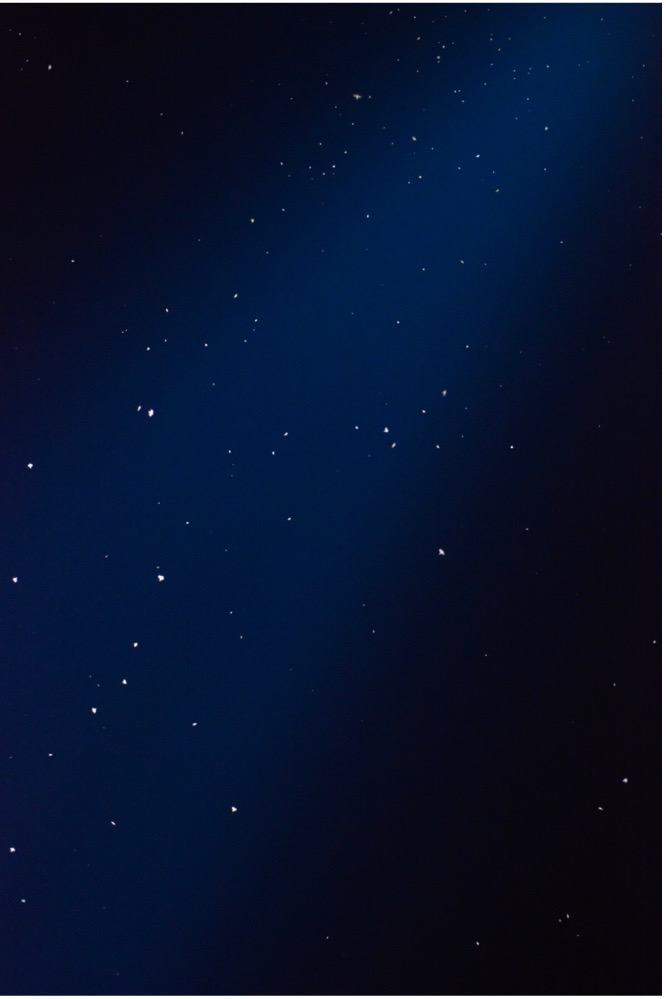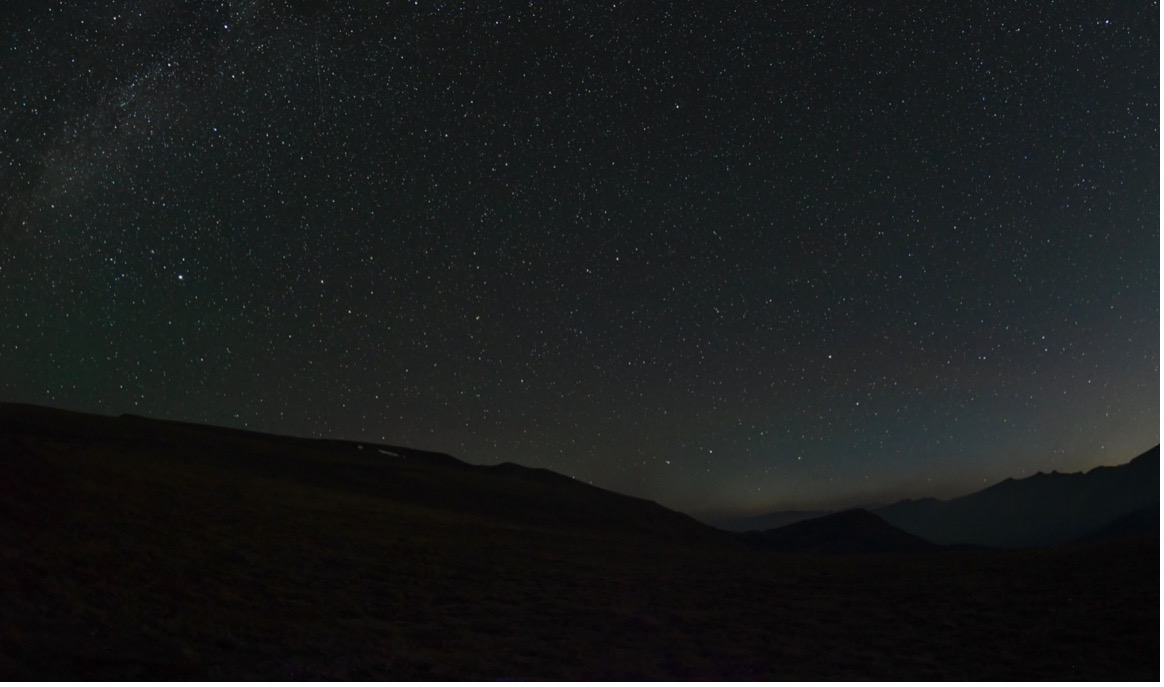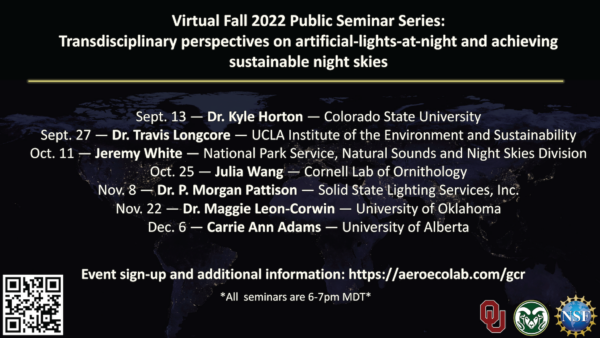
Photo by Kyle Horton taken at the 2017 September 11th Tribute in Light memorial. Each “white dot” is a migratory songbird attracted into the lights. Lights have the potential to severely interrupt migratory journeys, and at times, can result in fatal collisions.
Light pollution is increasing rapidly worldwide and emerging as a threat to bird conservation. Ecological processes, such as migration, require passage through areas of intense light pollution, even for individual birds that would otherwise avoid built environments during the rest of their annual lifecycle. This migratory journey occurs twice a year–every spring and fall–with the majority of bird species migrating under the cover of darkness. A consistent impact of light pollution on birds is the disruption of movement and orientation patterns, of which the impact on nocturnal bird migration can be devastating. Annually, nearly a billion birds die in collisions with buildings, many of these are migrant birds flying at night that are attracted to buildings by light pollution. As we continue to see a rapid increase of light pollution globally, both bird collisions with buildings and widespread disruption of animal orientation are growing conservation concerns as our dark skies continue to disappear.
BirdCast provides lights out alerts for you to take action in your local areas during peak migration seasons.
More broadly, light pollution is a societal problem. Artificial lighting is important to the economic life of cities and contributes to people’s perception of safety at night. However, any societal benefits derived from increases in light pollution may be countered by pervasive negative consequences for both ecological systems and human health.

The nighttime sky is a protected resource in the National Park System. This is the nighttime view in Rocky Mountain National Park with the Milky Way visible in the top left corner and sky glow from light pollution visible just over the mountains on the right. Photo taken by Kyle Horton.
To continue engaging with the public on this emerging threat to migrating birds, BirdCast team member Dr. Kyle Horton and his collaborators are hosting a virtual seminar series this fall entitled, “Transdisciplinary perspectives on artificial-lights-at-night and achieving sustainable night skies.” This series will explore the multiple perspectives on light pollution and search for ways to achieve sustainable nighttime skies. This series will span a range of topics, including the preservation of night skies, bird collisions, social perceptions and attitudes of light pollution, policy, community science, and technological tools for effective mitigation measures. You can find the full list of speakers below occurring throughout the fall, with Cornell’s Julia Wang presenting on October 25th. We hope you can join us! Sign up for this virtual series here.





